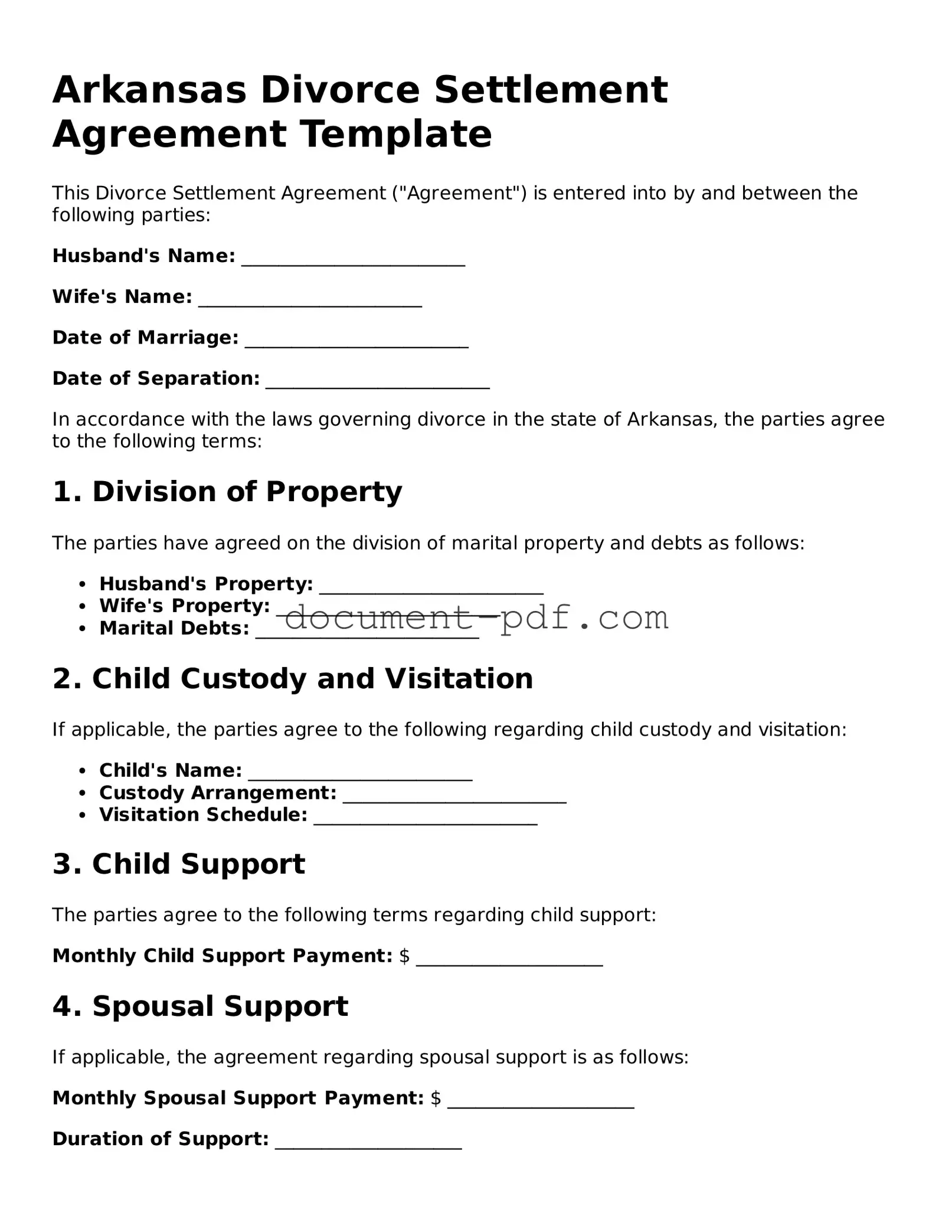Arkansas Divorce Settlement Agreement Template
This Divorce Settlement Agreement ("Agreement") is entered into by and between the following parties:
Husband's Name: ________________________
Wife's Name: ________________________
Date of Marriage: ________________________
Date of Separation: ________________________
In accordance with the laws governing divorce in the state of Arkansas, the parties agree to the following terms:
1. Division of Property
The parties have agreed on the division of marital property and debts as follows:
- Husband's Property: ________________________
- Wife's Property: ________________________
- Marital Debts: ________________________
2. Child Custody and Visitation
If applicable, the parties agree to the following regarding child custody and visitation:
- Child's Name: ________________________
- Custody Arrangement: ________________________
- Visitation Schedule: ________________________
3. Child Support
The parties agree to the following terms regarding child support:
Monthly Child Support Payment: $ ____________________
4. Spousal Support
If applicable, the agreement regarding spousal support is as follows:
Monthly Spousal Support Payment: $ ____________________
Duration of Support: ____________________
5. Medical Insurance
The parties have agreed on medical insurance coverage for the children as follows:
Insurance Provided By: ____________________
6. Miscellaneous Provisions
The parties agree to the following additional provisions:
- Property Division Details: ________________________
- Communication Plan: ________________________
- Other Agreements: ________________________
7. Signature and Date
By signing below, the parties acknowledge that they have read and understood this Agreement and voluntarily agree to its terms.
Husband's Signature: ________________________ Date: ________________________
Wife's Signature: ________________________ Date: ________________________
